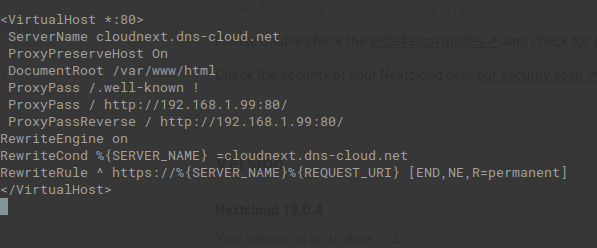Apache is the most popular web server. You can also use Apache as a frontend proxy server for backend running applications like Node.js. This tutorial will help you to set up your Apache server as a frontend proxy server for your Node.js application with easy steps.
- Apache2 Proxy Configuration
- Apache2 Https Proxypass
- Enable Https Apache2
- Apache2 Reverse Proxy Ssl
- Apache Proxy Server
- Apache Proxy Https Without Certificate
Apache HttpClient - Proxy Authentication - In this chapter, we will learn how to create a HttpRequest authenticated using username and password and tunnel it through a proxy to a target host, using an ex. Here is what I have used to access proxy autocomplete google places requests through local host on an installation of Apache including ssl support (version 2.2 for windows). Edit the apache file httpd.conf. Under Apache 1.x, modproxy only supported HTTP/1.0, but from Apache 2.0, it supports HTTP/1.1. This distinction is particularly important in a proxy, because one of the most significant changes between the two protocol versions is that HTTP/1.1 introduces rich new cache control mechanisms.
Before Start
- I am using Ubuntu 18.04 instance hosted on DigitalOcean.
- Installed latest Node.js version using this tutorial on this Linux machine.
Step 1 – Create Sample Node Application
As you are here 🙂 You must have a running Node.js application on some port. We assume you are running your application on port 3000. For the demonstration purpose, I am creating a sample web application on Node.js and run on port 3000. So it will be easier to understand for you.
Apache2 Proxy Configuration

Then, add the following content in the JavaScript file.
Your Node application is ready to serve on port 3000. Let’s start the Node.js application in the background.

And access this in the browser. You will see the result like below:
Step 2 – Install Apache Server
Now install the Apache web server using the default Package manager. The Ubuntu and Debian based systems use apt, Fedora and CentOS/RHEL 8 use DNF and CentOS/RHEL 7/6 uses yum. Apache packages is available under default repositories on almost operating systems.
After installation of Apache web server, you must have enabled the Proxy module. This module is enabled in Apache for users who installed using rpm packages. If you don’t have enabled edit your Apache configuration /etc/httpd/conf/httpd.conf or for Apache 2.4 /etc/httpd/conf.modules.d/00-proxy.conf file and uncomment the following lines or put them in the file.
For the Debian based systems use the following command to enable the Proxy module with Apache.
Step 3 – Configure Apache VirtualHost
As you have configured and running a Node.js demo server. Now, start configuration with Apache web server. Create a virtual host configuration file for your domain under /etc/apache2/sites-available/ directory.
and add the following content.
